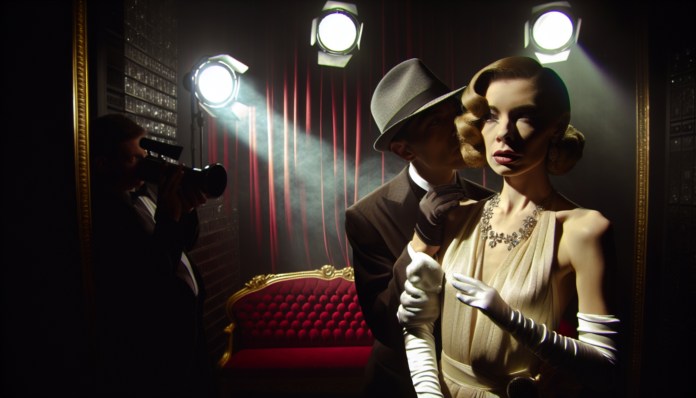Introduction
The glamour of Hollywood’s Golden Age often masked the tangled web of personal scandals woven within its star-studded tapestry. One of the most notorious tales of this era was that of actress and singer Jean Harlow, the original “blonde bombshell,” whose romantic entanglements and tragic demise illuminated the dark side of celebrity life. In the 1930s, Harlow embodied the burgeoning cultural shifts in America, where societal attitudes towards love, sex, and fame were evolving amidst the backdrop of the Great Depression. Her tumultuous relationships and untimely death reveal not only the private struggles of a Hollywood icon but also prompt a reflection on the moral sentiments of the era compared to today’s more liberated landscape.
The Scandal
Jean Harlow’s rise to fame was meteoric, yet her personal life was plagued by a series of scandalous romances. Her most notorious affair was with the married actor Paul Bern, whom she wed in 1932. Their marriage, tumultuous from the start, tragically ended when Bern was found dead in their home just months after the wedding—a case ruled a suicide. Rumors swirled that Harlow had intended to leave Bern, as he had allegedly subjected her to emotional distress. This storyline was sensationalized in the press, revealing the public’s insatiable appetite for the juicier aspects of celebrity relationships.
Key events around Harlow’s love life were frequently the subject of gossip columns. The couple’s conflict and Bern’s sudden death fueled speculation about Harlow’s involvement. As one newspaper lamented, “America’s Sweetheart has been sullied by the brush of scandal.” Harlow’s life became a subject of scrutiny—her every move was chronicled, and her heartbreak became fodder for the press.
Moral and Cultural Analysis
Society’s reaction to Harlow’s scandal was a mix of morbid fascination and moral outrage. In a time when Hollywood was considered both a glamorous fantasy and a moral battleground, the line between public persona and private life was often blurred. Many in the conservative society of the 1930s viewed Harlow’s open expression of sexuality as scandalous rather than liberating. The idea of a woman publicly grieving her husband while simultaneously being the object of public fascination was a complex narrative; some categorized her as a seductress, while others saw her as a victim of circumstance.
The aftermath of Harlow’s scandal contrasted sharply with contemporary perspectives. Back then, a woman’s reputation was precariously tied to her marital status and public behavior. Harlow’s career, however, did not suffer long-term damage—her beauty and talent ultimately reigned supreme, allowing her to emerge from the storm of gossip as a cherished star. In a world still grappling with gender norms and expectations, Harlow remained a beloved figure, but the conversation surrounding her life was fraught with judgment.
In today’s context, Harlow’s experiences may be viewed through a different lens—wherein female empowerment, mental health awareness, and open discussions around grief and relationships dominate the narrative. She would likely be framed as victim to a broken system and an industry that exploits vulnerability, showing the duality of fame and its often detrimental effects.
The cultural landscape has shifted dramatically since the 1930s; as we peel back the layers of Jean Harlow’s life and times, we find that the essence of love, loss, and the often harsh judgment passed in its wake resonates with audiences, if not more, even today. The Cinderella story, it seems, often unravels, revealing deeper complexities beneath the glittering surface.

